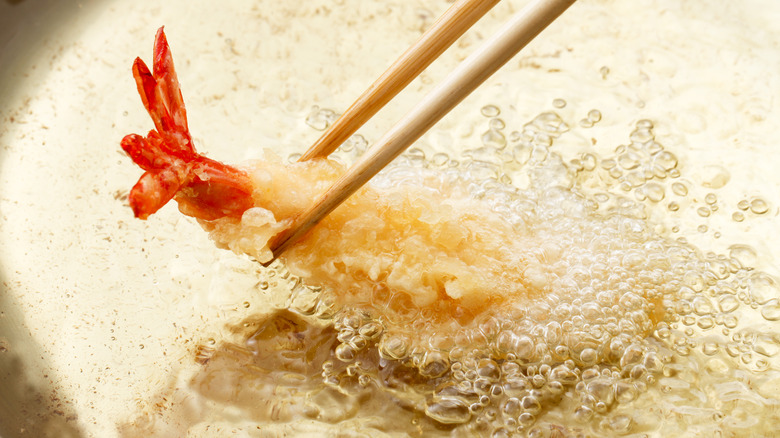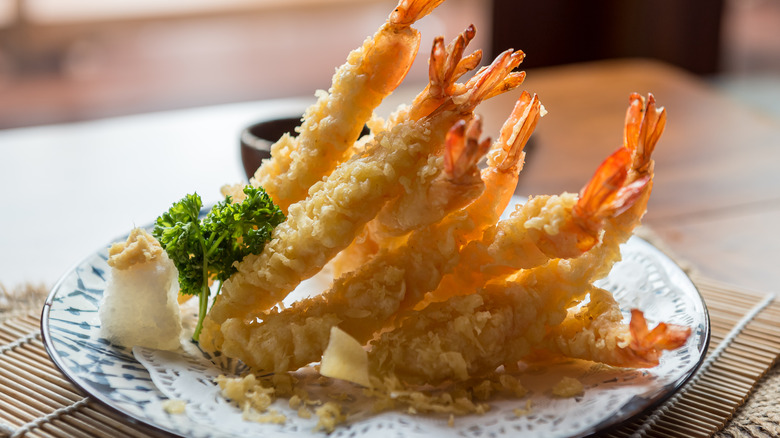How To Tell When Tempura Batter Is Done Frying
When foods are properly cooked tempura-style, they are lightly coated with golden crispiness that's light and pleasantly crunchy. Though this cooking method was introduced by the Portuguese in the 16th century (via BBC), it has since become a full-blown art that Japan has fully perfected. With just three ingredients, tempura batter sounds simple enough to make, but it can actually be quite tricky to get the water, flour, and egg to deep fry just right. You might struggle to replicate those tasty tempura rolls you can't seem to get out of your head from your last visit to a Japanese restaurant. Thankfully, there are a few key things to look for when making tempura batter that will ensure it fries all the way, so you can avoid an off-tasting finished product.
Japanese chef Shota Nakajima proved his mastery of tempura on Season 16, Episode 4 of the Food Network show "Beat Bobby Flay". He also showcased his other culinary gifts as a contestant on "Iron Chef Gauntlet" in 2017. Nakajima uses his senses rather intuitively to determine when the tempura is finished frying, which he shared at the 2022 Food and Wine Classic. The first step to making a successful batch of tempura batter happens in the mixing process. Overmixed batter will lead to the gluten acting up, resulting in stringy clumps that are chewier instead of the lovely crunch you crave. Once that's done, you can both see and feel when the tempura batter is finished frying.
Look for signs of excess moisture when frying tempura
Following a tempura recipe involves attention to detail and a watchful eye. Anywhere from 335 to 350 degrees Fahrenheit is an ideal temperature range to start frying up veggies or any other food of choice. Be extra careful not to crowd the pan when you fry, and to "make sure the oil comes back up to temperature before adding another batch," (via The Guardian). This step is crucial to eliminate the possibility of soggy tempura.
Chef Nakajima advises checking the bubbles first. Is the heat causing large bubbles to form? This means the tempura batter still contains a high amount of moisture, and your food should be left to cook a bit longer. Another technique Nakajima swears by is the use of chopsticks to gently hold the food as it's frying. If you can feel the batter vibrating a lot while holding the chopsticks, that's another sign that there's more moisture present than what is ideal. Cook your savory morsels for a bit longer until the bubbles are looking smaller and the batter's "vibrations" lessen. Nakajima also advises that, once the pieces are properly fried, you should remove them at an angle so the excess oil drips off. No soggy tempura in sight. What can we say? The man is a tempura wizard. Following small hints like these can often make a big difference in the quality of your homemade food!

